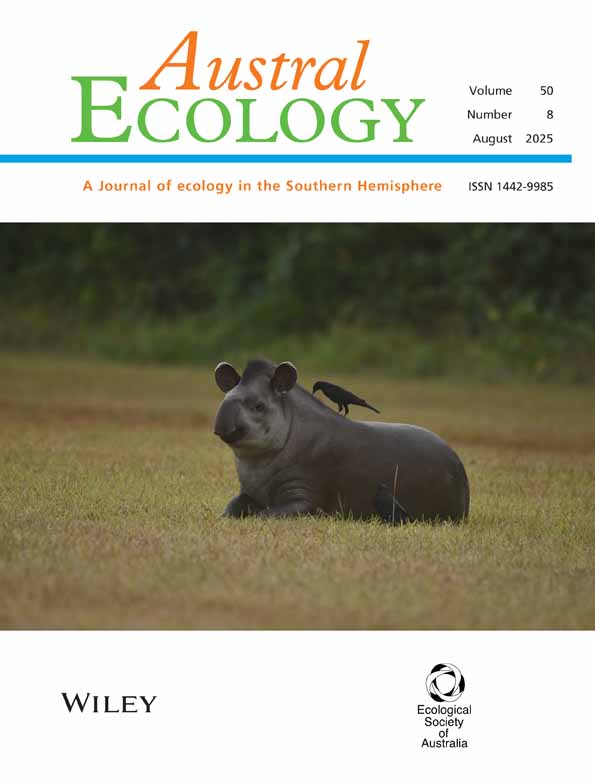Seasonal changes in the abundance and body condition of honeyeaters (Meliphagidae) in response to inflorescence and nectar availability in the New England National Park, New South Wales
Abstract
Seasonal changes in numbers and body condition of honeyeaters were examined over 2 years in the New England National Park, New South Wales, Australia. Nectar availability measured as inflorescence density and nectar production were also recorded. In the main study site, the abundance of six of the seven most common species of honeyeater was significantly correlated with inflorescence density. However, honeyeater numbers were not significantly correlated with daily energy productivity. Unlike most honeyeater communities, the New England community was dominated numerically by the Eastern Spinebill, the smallest of the most common species present. Among the most common species, the duration of time a species was recorded in the area was negatively, but not significantly, correlated with its size. All species examined showed similar seasonal changes in body condition, with the highest bodyweights and fat deposits recorded in winter.




